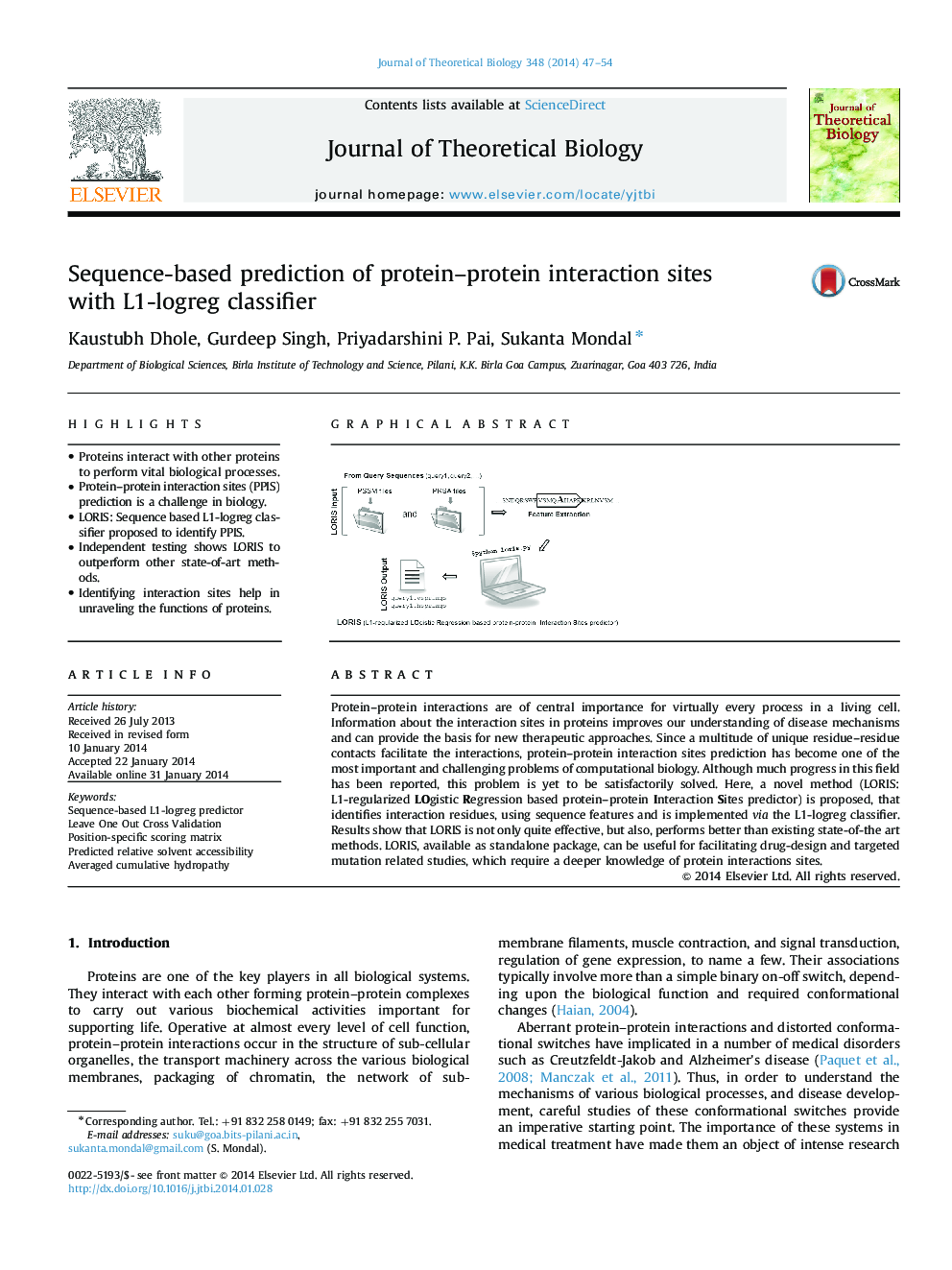| کد مقاله | کد نشریه | سال انتشار | مقاله انگلیسی | نسخه تمام متن |
|---|---|---|---|---|
| 6370640 | 1623862 | 2014 | 8 صفحه PDF | دانلود رایگان |

- Proteins interact with other proteins to perform vital biological processes.
- Protein-protein interaction sites (PPIS) prediction is a challenge in biology.
- LORIS: Sequence based L1-logreg classifier proposed to identify PPIS.
- Independent testing shows LORIS to outperform other state-of-art methods.
- Identifying interaction sites help in unraveling the functions of proteins.
Protein-protein interactions are of central importance for virtually every process in a living cell. Information about the interaction sites in proteins improves our understanding of disease mechanisms and can provide the basis for new therapeutic approaches. Since a multitude of unique residue-residue contacts facilitate the interactions, protein-protein interaction sites prediction has become one of the most important and challenging problems of computational biology. Although much progress in this field has been reported, this problem is yet to be satisfactorily solved. Here, a novel method (LORIS: L1-regularized LOgistic Regression based protein-protein Interaction Sites predictor) is proposed, that identifies interaction residues, using sequence features and is implemented via the L1-logreg classifier. Results show that LORIS is not only quite effective, but also, performs better than existing state-of-the art methods. LORIS, available as standalone package, can be useful for facilitating drug-design and targeted mutation related studies, which require a deeper knowledge of protein interactions sites.
Graphical Abstract
Journal: Journal of Theoretical Biology - Volume 348, 7 May 2014, Pages 47-54